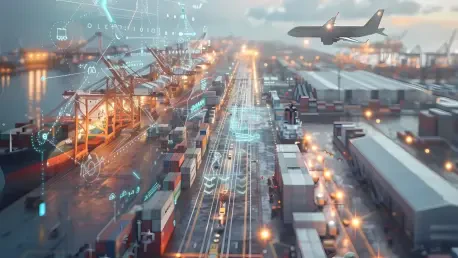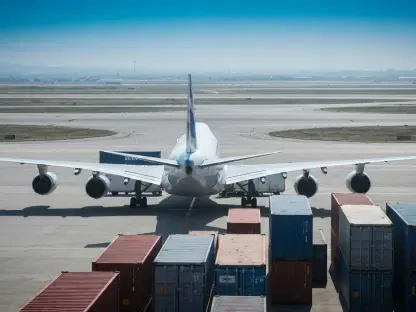Introduction
Imagine a world where goods move seamlessly across borders, powered by cutting-edge technology, yet are constantly challenged by economic downturns and geopolitical tensions that threaten to disrupt the flow. This is the reality of the freight and logistics industry in 2025, a sector pivotal to global trade but facing unprecedented complexities. The importance of this industry cannot be overstated, as it underpins supply chains that deliver everything from everyday essentials to industrial components. Understanding its current dynamics is crucial for businesses and stakeholders aiming to navigate these turbulent times.
The purpose of this FAQ article is to address the most pressing questions surrounding the freight and logistics landscape today. It aims to provide clear, actionable insights into economic conditions, technological advancements, and strategic shifts shaping the sector. Readers can expect to explore key topics such as market trends, trade policy impacts, and growth opportunities, gaining a comprehensive view of what drives this vital industry.
This content delves into various facets of logistics, from capacity challenges to cross-border developments, ensuring a broad yet detailed perspective. By breaking down complex issues into digestible answers, the article serves as a guide for those seeking to understand or adapt to the evolving environment. Prepare to uncover the forces steering the future of freight and logistics in this critical year.
Key Questions or Key Topics
What Are the Current Economic Conditions Affecting Freight and Logistics?
The freight and logistics sector is deeply intertwined with broader economic indicators, which currently paint a challenging picture. A significant measure, the Institute for Supply Management’s Manufacturing Purchasing Managers’ Index, stands below the growth threshold, indicating a persistent industrial recession. This downturn, especially in manufacturing-heavy segments, has led to reduced freight demand and prolonged market softness.
Several factors contribute to this economic climate, including stagnant industrial output and cautious consumer spending. These conditions have suppressed volumes and kept rates low, creating a tough operating environment for logistics providers. The correlation between economic indicators and spot market prices suggests that recovery hinges on a shift to positive readings, though such a change remains elusive as of now.
While no immediate upturn is evident, the potential for recovery exists if macroeconomic conditions improve. Businesses are advised to monitor these indicators closely, as even slight improvements could signal a shift in market dynamics. This ongoing recession underscores the need for strategic resilience and adaptability in planning for the months ahead.
How Do Tariffs and Trade Policies Impact Supply Chains?
Tariffs and trade policies, particularly between major economies like the U.S. and China, continue to influence supply chain strategies. These policies often create episodic disruptions, with some shippers experiencing inventory pull-forwards followed by periods of reduced activity. Despite the uncertainty, many have adapted to these conditions over time, mitigating the overall impact on operations.
The effects vary across industries, with certain sectors absorbing increased costs to maintain market share, while others reroute freight through alternative countries to bypass tariffs. This pragmatic approach reflects a growing acceptance of trade tensions as a manageable challenge rather than a crippling obstacle. However, the lack of detailed data makes it difficult to quantify the precise impact on specific supply chains.
Anecdotal evidence suggests that shippers are finding ways to navigate these policies, often through strategic cost management or geographic diversification. For logistics providers, staying agile and offering flexible solutions is key to supporting clients in this environment. The evolving nature of trade policies necessitates continuous monitoring to anticipate and respond to sudden shifts.
What Trends Are Shaping Peak Season and Import Volumes?
Peak season dynamics in 2023 are less predictable due to economic uncertainties and trade-driven inventory adjustments. Record import volumes at major West Coast ports have been observed, yet there’s debate over whether the traditional peak has already passed due to earlier pull-forwards. This disruption of normal seasonality patterns complicates forecasting for logistics providers and shippers alike.
Economic indicators play a significant role in these trends, as artificial surges in demand often mask underlying weaknesses. Without genuine growth in consumer or industrial demand, sustained recovery during peak periods remains uncertain. This unpredictability affects planning for capacity and resource allocation across the supply chain.
Logistics stakeholders must prepare for potential slowdowns following early peaks, adjusting expectations for the latter part of the year. Close attention to import data and broader economic signals can help in anticipating whether a late surge might still occur. Flexibility in operations will be essential to manage these fluctuating patterns effectively.
Why Is Nearshoring in Mexico a Growing Opportunity?
Nearshoring in Mexico has emerged as a significant trend, driven by companies seeking to avoid tariffs and benefit from proximity to the U.S. market. This shift is reshaping supply chains, with both domestic and international firms establishing operations south of the border. The trend represents a structural change in how goods are produced and transported across North America.
Logistics providers are capitalizing on this opportunity by expanding their presence in key Mexican hubs, enhancing infrastructure, and deploying specialized technology for cross-border operations. The collaboration between companies from various regions further fuels freight movement, creating a dynamic environment for growth. This area is seen as having immense potential for expansion in the coming years.
The rise of nearshoring highlights the importance of regional partnerships and tailored logistics solutions. Businesses looking to leverage this trend should consider investing in local expertise and infrastructure to streamline operations. Mexico’s role in global supply chains is only set to increase, making it a critical focus for strategic planning.
How Is Mergers and Acquisitions Activity Evolving in Logistics?
Mergers and acquisitions activity in the logistics sector is witnessing a resurgence, even amidst market challenges. Smaller companies with growth potential are increasingly coming to market, offering opportunities for larger players to expand their capabilities. This trend marks a shift from earlier periods of limited deal-making, reflecting a strategic push for consolidation.
Recent acquisitions have been praised for aligning culturally and complementing existing strengths, such as expertise in managed transportation. This approach to M&A focuses on integrating non-overlapping customer bases and enhancing service offerings. Active evaluations of potential deals suggest that this activity will likely continue into the near future.
For companies in the logistics space, M&A presents a pathway to gain competitive advantages and broaden market reach. Careful assessment of cultural and operational fit is crucial to ensure successful integration. This evolving landscape indicates a proactive stance toward growth, even in a soft market environment.
What Role Does Technology and Artificial Intelligence Play in Logistics?
Technology, particularly artificial intelligence, is transforming the logistics industry by enhancing operational efficiency. Many providers are aggressively adopting AI tools to optimize behind-the-scenes processes, with numerous use cases already in play and more on the horizon. This focus on innovation positions technology as a key differentiator in a competitive market.
The challenge lies in integrating AI with proprietary data and adapting business processes to maximize its benefits. While customer-facing applications are still developing, the internal impact on decision-making and productivity is significant. These advancements promise to redefine how logistics operations are managed and executed over time.
Adopting AI requires a strategic approach to ensure alignment with overall business goals. Companies must invest in training and system integration to fully harness these tools. As technology continues to evolve, staying ahead of the curve will be essential for maintaining a competitive edge in the industry.
What Are the Dynamics of the Truckload Brokerage Market?
The truckload brokerage market remains in a prolonged state of softness, with neither significant declines nor improvements in volumes and rates. This extended U-shaped trend reflects a lack of momentum, though capacity continues to exit as smaller carriers struggle to survive. Such exits create latent potential for market tightness if demand were to spike.
Temporary demand surges have demonstrated how quickly capacity constraints can drive rate increases. However, without a broader economic catalyst, the market lacks the momentum for sustained recovery. This volatility underscores the delicate balance between supply and demand in this segment.
Logistics providers must remain vigilant for signs of demand triggers that could shift market conditions rapidly. Planning for potential tightness involves maintaining flexible capacity options and strong carrier relationships. The current softness belies the underlying potential for swift changes, requiring constant readiness for unexpected developments.
What Is the Market Outlook for Freight and Logistics?
Looking at the immediate future, the freight and logistics sector shows modest growth for some providers, largely driven by market share gains rather than industry-wide recovery. Mid-single-digit increases in volume and revenue are reported by certain companies, though broader market softness persists. Caution remains the prevailing sentiment regarding a near-term turnaround.
Potential catalysts for improvement include favorable economic policies, reduced interest rates, and increased domestic manufacturing, though their impact may not be felt for another year or two. Natural disruptions, such as severe weather events, could also alter the supply-demand balance temporarily. These factors contribute to a cautiously optimistic outlook for the sector.
Stakeholders should focus on incremental gains while preparing for longer-term shifts. Monitoring macroeconomic trends and policy developments will be critical to anticipating recovery timelines. Balancing current challenges with strategic investments positions companies to capitalize on eventual market upturns.
Summary or Recap
This article addresses the multifaceted challenges and opportunities within the freight and logistics industry in 2025. Key insights include the ongoing industrial recession impacting demand, the manageable disruptions caused by tariffs, and the significant growth potential from nearshoring in Mexico. Additionally, the resurgence of M&A activity, transformative power of AI, and volatile truckload brokerage market dynamics are critical areas of focus.
The main takeaways highlight the necessity of adaptability in the face of economic headwinds and the importance of strategic investments in technology and regional expansion. These elements are shaping the industry’s trajectory, offering pathways to resilience amid uncertainty. Understanding these trends equips stakeholders to navigate the current landscape effectively.
For those seeking deeper exploration, resources on supply chain management, trade policy updates, and technological innovations in logistics are recommended. Engaging with industry reports and expert analyses can provide further clarity on specific market segments. This comprehensive overview serves as a foundation for informed decision-making in a complex environment.
Conclusion or Final Thoughts
Reflecting on the discussions that unfolded, it becomes evident that the freight and logistics sector faces a pivotal moment in 2025, balancing immediate economic constraints with long-term strategic opportunities. The insights shared paint a picture of an industry poised for transformation despite persistent challenges.
Moving forward, businesses are encouraged to prioritize investments in technology, particularly artificial intelligence, to streamline operations and gain a competitive edge. Exploring growth areas like nearshoring in Mexico and staying agile in response to trade policy shifts emerge as actionable steps to build resilience.
A final thought lingers on the importance of proactive adaptation—how each stakeholder can assess their unique position within this dynamic landscape. Considering tailored strategies to address specific market conditions or capacity needs is deemed essential for turning challenges into stepping stones for future success.









